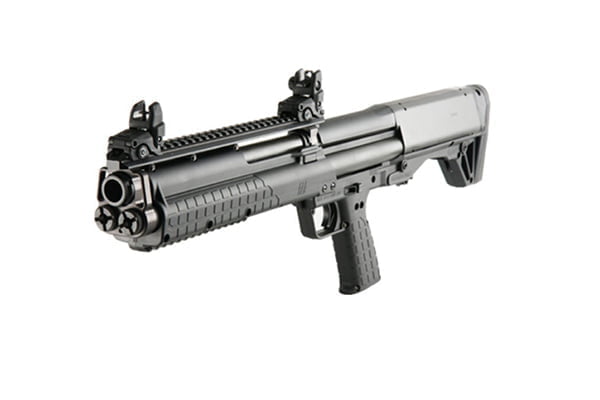
Eugene Stoner has not only shaped military armaments but also left an indelible mark on civilian gun ownership and sporting use. Stoner’s contributions have cemented his legacy as one of the most influential figures in the history of firearms.
Early Life and Career
Born in 1922 in Gosport, Indiana, Eugene Stoner showed an interest in mechanics and engineering from a young age. After serving in the U.S. Marine Corps during World War II, Stoner joined ArmaLite, a division of Fairchild Engine and Airplane Corporation. His career as a firearms designer took off almost immediately.
The ArmaLite Era
At ArmaLite, Stoner’s innovative approach to weapons design quickly became apparent. He was instrumental in developing several key firearms that would set the stage for his most famous creation, the AR-15. Stoner’s designs were characterized by their use of lightweight materials, such as aluminum and plastics, which were revolutionary at the time. His vision was to create more reliable, lightweight, and easy-to-use firearms for both military and civilian use.

The AR-15
The AR-15, perhaps Stoner’s most famous invention, was genius. It was lightweight, air-cooled, gas-operated, and magazine-fed—characteristics that made it significantly more advanced than its contemporaries. The AR-15’s modularity and ease of maintenance were revolutionary, allowing for extensive customization.
Now the concept was incredible, but the timing was abysmal. The US military had asked for rifles to replace the obsolete M1 Garand and Armalite basically threw together prototypes without proper testing. The AR-10 arrived to military testing too late and suffered with teeting problems. So the M14 took over from the M1 Garand as the military played it safe, partially due to the military procurement chiefs doubts about its ability to perform in battle.
As it turned out, it was the M14 that was a disaster in the field. In the Vietnam War the M14 proved uncontrollable in full auto and the soldiers could not carry enough of the 7.62x51mm NATO ammo to be effective in the field.
The M14 got destroyed by the ancient AK-47 full auto weapons in the hands of the enemy, and the US military issued a plea for a duty rifle chambered in 223 Remington (5.56x45mm NATO).
Stoner developed the AR-15 shortly afterwards and it impressed as soon as it entered military testing in 1958. Despite the AR-15 demolishing the M14 in most tests, US Army Chief of Staff General Maxwell Taylor vetoed the AR-15.
After years of R&D, and limited success, ArmaLite tired of the concept and sold it to Colt. It was one of the worst business decisions in the firearms industry and robbed ArmaLite of a golden future as Colt cashed in on Stoner’s hard work. The rifles were branded Colt ArmaLite, but it was Colt who took the spoils.
The AR-15 would eventually be adopted by the U.S. military as the M16, becoming the standard infantry weapon and serving in various conflicts around the globe.
Colt made fundamental changes, including moving the charging handle from the side to the rear of the upper receiver. But the basics were down to Stoner and you can still buy a Colt LE6920 to this day, with no ArmaLite branding.
Legacy and Impact
Eugene Stoner’s impact on firearms design and the defense industry was immense, and he arguably helped to shape the world as we know it. His innovations have influenced countless designers and manufacturers, and his work remains a benchmark for firearm efficiency, reliability, and modularity.
Stoner’s legacy is not just in the weapons he created but in his approach to design, which emphasized simplicity, efficiency, and the use of modern materials. The fact you can buy a $500 AR-15 off the shelf today that follows the same basic recipe is a testament to his skills.
Stoner’s Greatest Creations
AR-15/M16
The AR-15, later adopted by the U.S. military as the M16, represents a pinnacle in Stoner’s career. Its revolutionary design features—lightweight materials, modularity, and reliability—have made it one of the most iconic and widely used rifles in the world. The platform’s versatility has led to countless variations for military, law enforcement, and civilian use.
The balance of stopping power, portability, ease of customization and reliability marks the AR-15 rifle apart. It’s just that good and it’s a gun that changed the world.
AR-10
Preceding the AR-15, the AR-10 was Stoner’s first foray into lightweight, high-capacity, gas-operated rifles. Designed for the 7.62×51mm NATO cartridge, it offered advancements in accuracy and reliability over existing designs. Although it was not adopted as widely as the AR-15, the AR-10 set the stage for its smaller caliber successor and remains popular among enthusiasts and marksmen.
Again the AR-10 survives to this day, basically unchanged.
Stoner 63
The Stoner 63 is a testament to Stoner’s innovative spirit. This modular weapon system could be configured as a rifle, carbine, light machine gun, or even a belt-fed squad automatic weapon.
Its adaptability made it ahead of its time, showcasing Stoner’s commitment to creating versatile and efficient firearms. Despite limited adoption, the Stoner 63 has a cult following and is revered for its engineering ingenuity.
M4 Carbine
While not directly invented by Stoner, the M4 Carbine is a direct descendant of his AR-15 design principles. Its compact size and lighter weight make it ideal for close-quarters combat, while retaining the versatility and reliability of the original AR-15 platform. The M4’s widespread use by military forces worldwide is a testament to the enduring legacy of Stoner’s design philosophy.
Knight’s Armament SR-25
Collaborating with C. Reed Knight Jr., Stoner played a role in the development of the SR-25 sniper rifle. Utilizing the 7.62×51mm NATO cartridge, it combines the accuracy required of a sniper rifle with the reliability of Stoner’s gas-operated design principles. The SR-25 has seen use by various military and law enforcement snipers, exemplifying Stoner’s impact on precision firearms.
Conclusion
Eugene Stoner’s legacy is built on a foundation of innovation, vision, and an unwavering commitment to improving firearm design. His work has not only advanced military capabilities but also enriched the civilian firearms community. Stoner’s creations continue to influence the industry, embodying principles of reliability, modularity, and performance.


